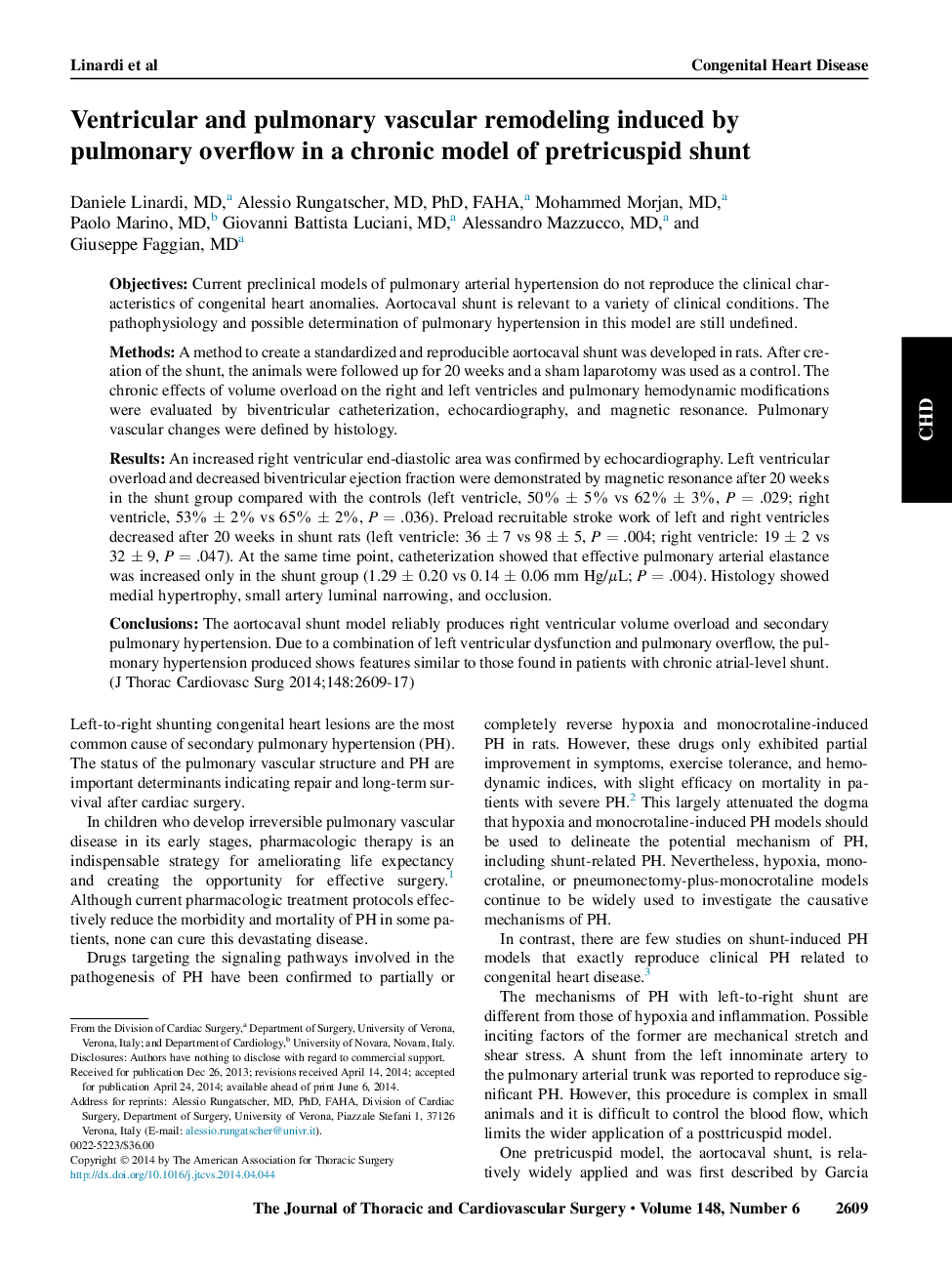| کد مقاله | کد نشریه | سال انتشار | مقاله انگلیسی | نسخه تمام متن |
|---|---|---|---|---|
| 5989698 | 1578604 | 2014 | 9 صفحه PDF | دانلود رایگان |
ObjectivesCurrent preclinical models of pulmonary arterial hypertension do not reproduce the clinical characteristics of congenital heart anomalies. Aortocaval shunt is relevant to a variety of clinical conditions. The pathophysiology and possible determination of pulmonary hypertension in this model are still undefined.MethodsA method to create a standardized and reproducible aortocaval shunt was developed in rats. After creation of the shunt, the animals were followed up for 20 weeks and a sham laparotomy was used as a control. The chronic effects of volume overload on the right and left ventricles and pulmonary hemodynamic modifications were evaluated by biventricular catheterization, echocardiography, and magnetic resonance. Pulmonary vascular changes were defined by histology.ResultsAn increased right ventricular end-diastolic area was confirmed by echocardiography. Left ventricular overload and decreased biventricular ejection fraction were demonstrated by magnetic resonance after 20 weeks in the shunt group compared with the controls (left ventricle, 50% ± 5% vs 62% ± 3%, P = .029; right ventricle, 53% ± 2% vs 65% ± 2%, P = .036). Preload recruitable stroke work of left and right ventricles decreased after 20 weeks in shunt rats (left ventricle: 36 ± 7 vs 98 ± 5, P = .004; right ventricle: 19 ± 2 vs 32 ± 9, P = .047). At the same time point, catheterization showed that effective pulmonary arterial elastance was increased only in the shunt group (1.29 ± 0.20 vs 0.14 ± 0.06 mm Hg/μL; P = .004). Histology showed medial hypertrophy, small artery luminal narrowing, and occlusion.ConclusionsThe aortocaval shunt model reliably produces right ventricular volume overload and secondary pulmonary hypertension. Due to a combination of left ventricular dysfunction and pulmonary overflow, the pulmonary hypertension produced shows features similar to those found in patients with chronic atrial-level shunt.
Journal: The Journal of Thoracic and Cardiovascular Surgery - Volume 148, Issue 6, December 2014, Pages 2609-2617
